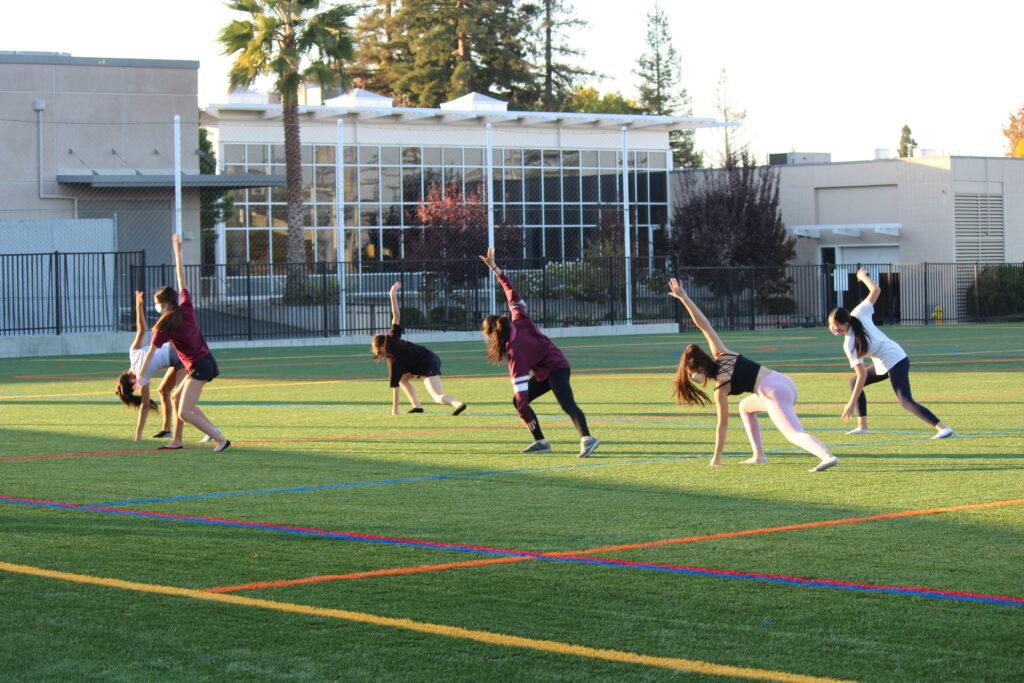At the beginning of the school year, the district announced a four-stage plan to gradually transition from online school back into in-person school. The district is currently in Phase 2B and for the first time since March, small cohorts of students and teachers have been allowed back on campus.
These groups were selected through a number of different factors, including county safety guidelines, whether teachers were comfortable with returning and student interest. According to principal Greg Louie, there are currently four cohorts on campus.
The administration first reached out to all teachers and gauged their interest in returning. Of these teachers, special education Sequential math teacher Jennifer Chong, Algebra I teacher Kelly Frangeih and English 11 and 12 special education teacher Lauren Taylor are all running small cohorts in their classroom. In addition, campus supervisor Allan McGurk is supervising a group of students in the library. These students have either had trouble with online learning or their home technology.
“All of our teachers who are involved are doing it because they believe their students will really benefit from it and need it,” Louie said. “Kudos to the teachers for really being there for their students and caring about their well-being.”
From there, teachers communicated with the students’ parents and determined a plan for them to come onto campus for a certain period. By the end of the process, each of the four teachers had 2-8 students returning as part of a cohort.
With Phase 2 being the first time that students would return to campus since March, the school was focused on ensuring their safety against the coronavirus by taking extensive safety measures.
“Every possible precaution right now is being taken,” Louie said.
Everyone is required to wear a mask and social distance in and out of the classroom. Every morning, teachers have asked students screening questions to check for COVID symptoms. Within classrooms, teachers have spaced desks 6 feet apart and left doors open to air circulation. In addition, hand sanitizer is available in each classroom, spare masks are available and maintenance workers disinfect cohort classrooms daily.
“It really depends on students being upfront and honest with us,” Louie said. “We ask all students to take their temperature before coming to school. If the student is honest but doesn’t have the right answer for the screening questions, we communicate with the family and send them home.”
In the event that someone on campus comes down with COVID-19, the district has a set protocol to deal with the situation. The school must notify the county’s public health department, which then would start with a contact tracing process. Various teachers would also coordinate to notify all student families of the situation and next steps. At the same time, Louie stressed the importance of ensuring that the sick person’s identity remains confidential.
“As many of the precautions as possible are being taken,” Louie said. “But if someone were to come down with COVID-19, there are a ton of steps we’d have to take to follow protocol.”
As of now, the vast majority of students remain only in distance learning, which has taken place through scheduled Zoom meetings and asynchronous homework. However, many of these students had returned to school for school-sponsored extracurricular activities such as robotics and band until the county’s recent lapse into the purple tier.
Junior Sajiv Shah, the hardware lead for the school’s FRC robotics team, had been regularly returning in-person to school since Nov. 7. He was impressed with the precautions the school was taking.
“All team members were taking their temperatures at home, wearing masks, social distancing, and if anyone left the county, they stayed home,” Shah said. “I absolutely thought it was safe.”
Shah believes that the productivity of their team was greatly improved by being able to come onto campus and piece the robot together as a group. Due to Santa Clara County moving into the purple tier in November, all the team’s in-person meetings have been canceled for the time being. Shah believes the impact of this is so great that he is unsure of whether their season will even be able to continue.
Junior Arnav Shah (no relation to Sajiv) found that much of the same rang true for the marching band’s percussion section. All members wore masks whenever possible. In addition to socially distancing, they also practiced outside instead of inside as they typically would, which greatly reduced any chances of transmission.
In terms of performance, Arnav saw that they were able to be far more efficient in person.
“Everyone improved a lot through the in-person direction,” Arnav said. “We saw a lot more progress in the music when practicing in person rather than over Zoom.”
Until they are allowed to go in-person again, Arnav said that winter band sections will be switching over to Zoom.
“I definitely think it will be hard to see the same progress as in-person band, but I think they will still be able to finish the show,” Arnav said.
To gauge how comfortable the general student population is with returning to school, administrators have sent online surveys to all students and families. Responses to these surveys are yet another factor the school takes into account when assessing whether they can move forward to the next phase.
According to administrators, the school will remain in Phase 2B even at the start of second semester, indicating that no major changes are planned given the shifting circumstances. While the school originally planned for 1-2 more cohorts to return as part of Phase 2B after the Thanksgiving break, this was also delayed.
Through following public health recommendations, assessing students’ comfort with returning and attempting to keep themselves safe on campus, administrators have been steadily working to return as effectively and soon as possible to school.
“This whole thing is relatively unpredictable, and everyone is trying to just make it work without taking excessive risks,” Louie said.
























